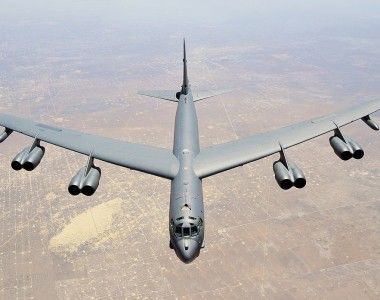MSPO 2019: Borsuk Programme Progress [ANALYSIS]
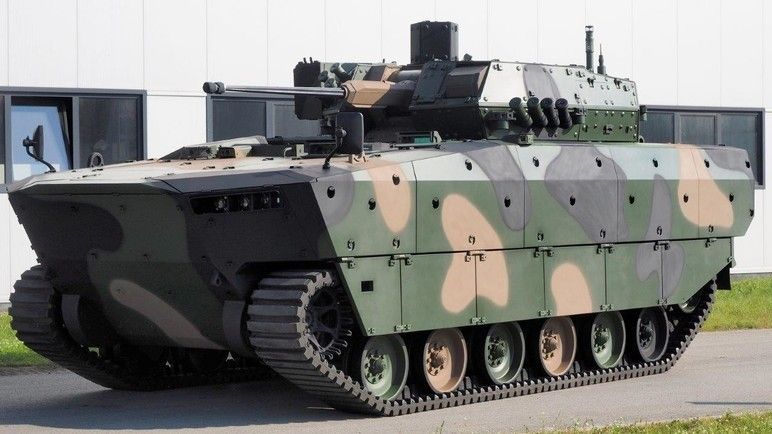
People attending the Kielce MSPO defence industry exhibition have an occasion to get acquainted with the prototype of the new generation Borsuk amphibious IFV. The vehicle is being built by a consortium led by the HSW S.A. company belonging to the PGZ Group.
Borsuk has already been premiered in Kielce back in 2017, in a form of a full-scale model made out of armoured steel. Since then, major advancements have been made in the programme. The results were presented during this year’s edition of the Kielce-event. Borsuk has already passed a number of tests, including ones related to amphibious capabilities and IED protection. A full-size prototype is expected to be created by the end of this year.
At the beginning of the Borsuk IFV R&D process, procedures needed to be created to design a unique product - an amphibious tracked platform with a high level of ballistic and IED protection offered. Effort as such has only been attempted by a few countries. Poland began its effort from establishment of a knowledgeable consortium with optimal division and assignments of tasks betweens the members, with attention being paid to their potential, expertise and capacity. Then a decision was made to carry out certain basic research pertaining to the R&D subject. The effort was coordinated between civil and military entities, gathered both within the PGZ Group, as well as those belonging to the private sector.
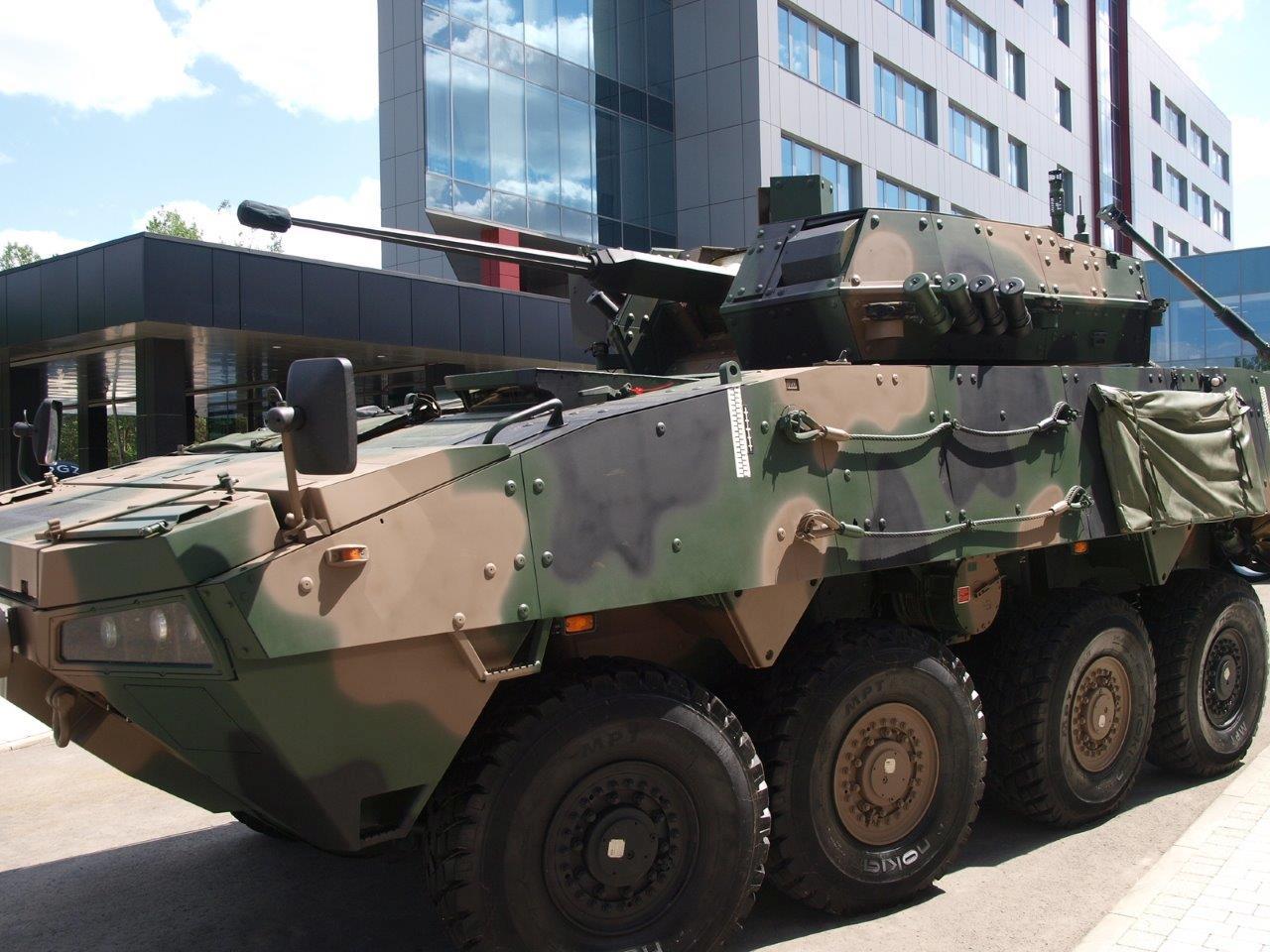
Finally, work on the first Polish unmanned turret dedicated for fighting vehicles was being carried out in parallel to the Borsuk effort. This fact also had to be taken into account. Even though the turret is being developed by a separate consortium, there is a common ground between the two - they are both led by HSW S.A. NPBWP Borsuk and ZSSW-30 are not the only programmes that HSW S.A. is working on, as the company is also involved in other R&D initiatives. These include Baobab-K scattered minelaying system or wheeled Kryl 155 mm self-propelled howitzer. HSW is also overhauling the military equipment and accomplishes work aimed at delivery of spare parts. The company is also getting ready to work with a foreign partner on manufacturing 120 mm main battle tank guns.
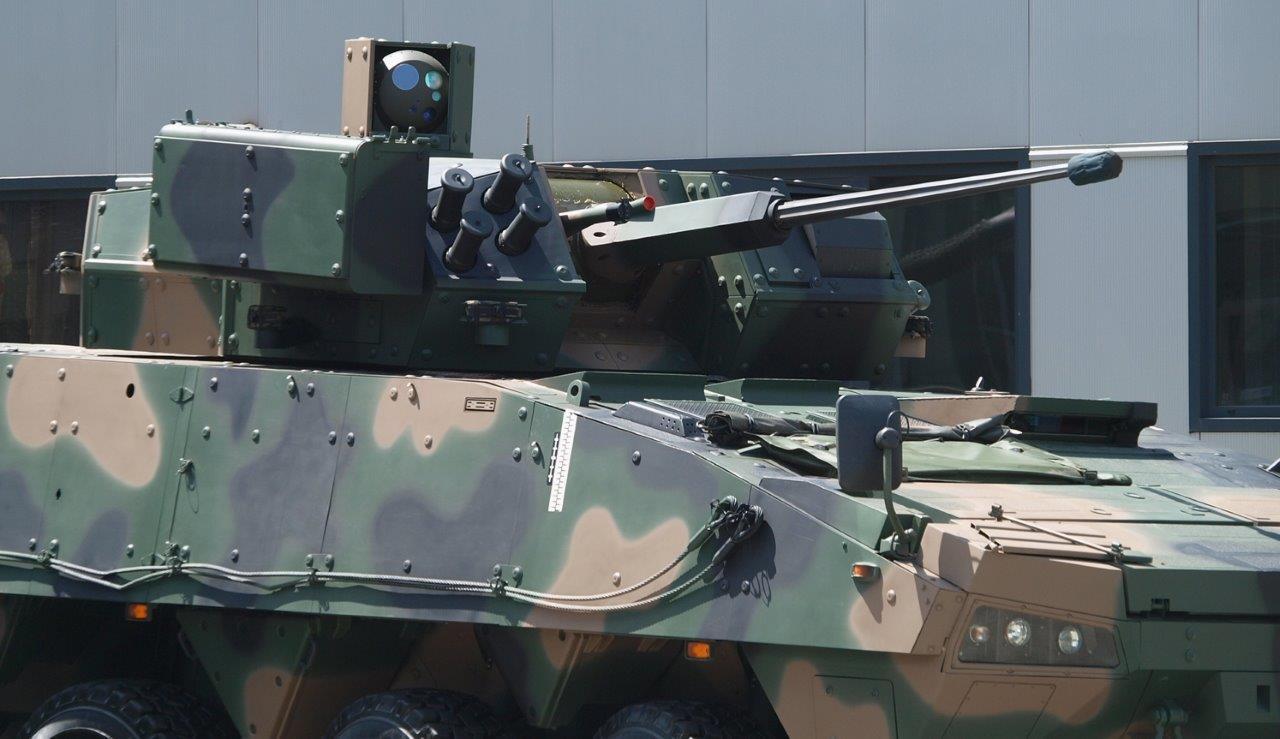
The company also, when working on Borsuk, managed to efficiently transition from R&D to production phase in case of two major artillery programmes: DMO Regina and KMO Rak. At the same time major investments were also made at HSW. Barrel manufacturing facility has been modernized and expanded. Manufacturing facility created from a scratch is being launched to manufacture license-based Krab howitzer platforms - the facility involves a robotized welding line, X-ray diagnostics centre for the welded elements and a machining facility. HSW S.A. is also working on establishing another facility that would be used to work on the M903 Patriot system launcher. Finally, the company is also building a test track that would be located near its facilities.
Presentation of the Borsuk IFV, when placed within a broader context of the implementations and research undertaken by HSW, makes it possible to assess the progress from the contractor’s standpoint. HSW works on a number of other, important assignments ordered by the Polish military. This point of view is as important as those related to time and financing - two factors that play a decisive role in progression of work.
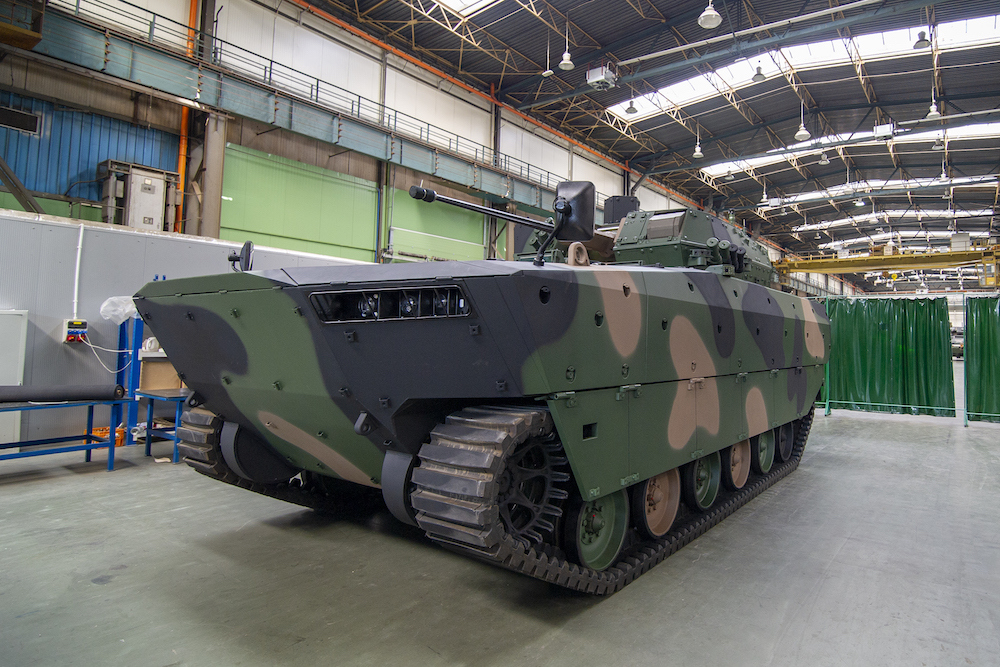
One should recall the fact that Borsuk new generation amphibious IFV R&D agreement was signed on 24th October 2014, following the second competition organized by the National Centre for Research and Development within the scope of this programme (5/2014). Financing was defined for the programme in question at the level of PLN 75 million. National Centre for Research and Development provided 62 million zlotys. April 2021 has been defined as the deadline for completion of the development effort - this has been done as a result of amendments of the original terms.
So, what is the status of the Borsuk programme, just 5 years after it was launched? Since 2017 a 1:1 model with prototype features has been in existence. It is a subject to preliminary tests. It has been made out of metal. The prototype has been going through road and offroad testing since then, and the results of those tests are being taken into account in an ongoing manner, as changes are introduced in some components and design elements. The changes are applicable to the power-pack mount, for instance, or other drivetrain solutions.
The prototype went through static, dynamic, amphibious tests, both within the pools at the test facility (watertightness, balance, stability) and in open waters. During the recent tests at Zalew Zegrzyński it turned out that Borsuk IFV’s performance exceeded the design assumptions, within the scope of its speed in the water and maneuverability. The test programme involved a vehicle with weight equivalent installed, simulating the ZSSW-30 turret.
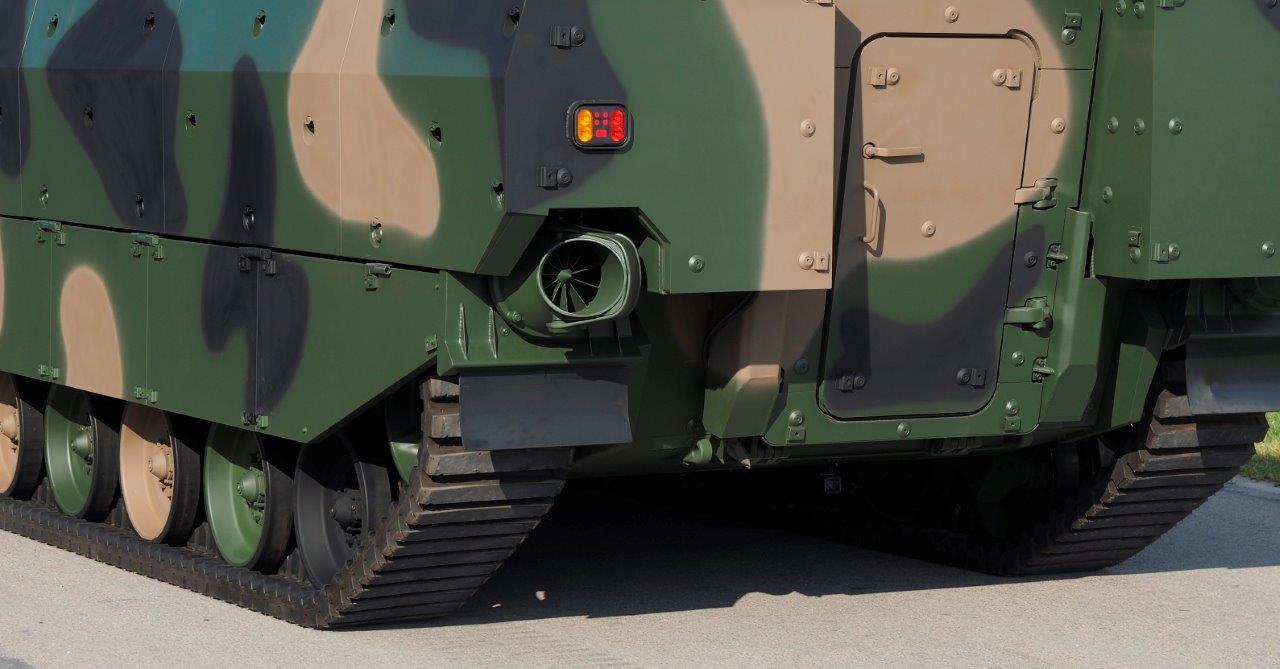
Independently from the test programme to which the vehicle is subjected, further research is also conducted to optimize the shape of the hull’s bottom part. The above applies both to geometry, as well as to the bottom and side structure of the IFV hull. The goal of these tests is to attain properly satisfying hydrodynamic features of the vehicle. Those would guarantee good in-water characteristics, also when the vehicle enters and gets out of the water. However, the most important issue here is to ensure the IED/mine protection level compliant with the customer requirements.
For reasons that are obvious, details of this effort remain confidential. General information that activities pertaining to the above matters were being conducted in parallel, in both direction, should be considered by the general audience to be sufficient for now. The above primarily concerns the process of shaping the hull bottom geometry in a manner that would dissipate the post-explosion shockwave, so that it would be directed and neutralized by the design layers to the level that would prevent penetration of the bottom. The requirement to dissipate the explosion energy in a way that would diminish the G-force below the critical value for the soldiers inside the vehicle, so that no serious injuries occur, was of tantamount importance. Properly shaping the individual layers of the vehicle bottom was important here. Another relevant area was related to proper selection of hull materials.
Selection of an absorbing material that would absorb and dissipate the energy, at the same time being inflammable, and not generating any fragments was also very important within that regard. The material was expected to have features that would be fitting for the manufacturing process as well. At the same time, it was to exhibit proper mechanical strength and it was to be light, not to have a detrimental impact on the vehicle displacement and the IFV’s amphibious capabilities. Further limitations were also imposed through budgetary constraints. Optimization of those features was focused on finding a compromise between the technical characteristics and the cost of the implemented solutions.
The fact that Polish industry does not really offer a lot of quality materials now makes the matter even more complex. Most probably cooperation with the foreign contractors cannot be avoided here, at a deeper level. However, HSW did not disclose whether ceramic aramid or polyamide, basalt, boron or silicon carbide or other materials are considered here. Similar materials were used in case of the additional ceramic armour and external armour elements also serving as float assistance. When those problems were being resolved, framework of cooperation was designed with one of the private companies working in the field, and an entity manufacturing modern innovative camouflage systems belonging to the PGZ Group.
Experiences gathered when working on the ballistic protection of the Borsuk vehicle in several domains and directions are to be used in the process of developing a heavy variant of the Borsuk IFV that would not need to be amphibious, at the same time providing the user with much higher level of protection.
During the mine protection tests, being critical for the armoured amphibious vehicle, many solutions were tested, both materials-, as well as structure-wise. Further attention was also paid to proper shaping of the bottom part of the armour. It’s enough to say that the work began with a test involving 8 kilograms of explosive that was able to propel an element simulating the IFV 70 cm upwards, seriously deforming it. This illustrates the energy that was to be contained. Each stage of the analysis, calculations, simulations and design changes was verified by hot tests on so called weight/size equivalent model at the Military Institute of Automotive and Armoured Technology test range.
9th August 2019 brought in a breakthrough. During another test, the desired results have been achieved. The explosive did not penetrate the hull structure, it also did not deform the vehicle bottom. This test made it possible to bring the model test phase to a closure. The tests in question were approved by a supervisory team, within the framework of the R&D procedures. The test would need to be repeated on a full sized and fully equipped Borsuk body, not only with involvement of a myriad of sensors recording the parameters related to post-explosion vehicle behaviour, but also with all of the vehicle’s systems in place, suspension, equipment and test dummies seated inside, in crew and troop compartments, wearing all of the equipment.
After 9th August the designers agreed that one of the design objectives was achieved, after just 5 years of work on the convoluted product. Borsuk needs to meet contradicting requirements, that are all quite challenging. Not only is the vehicle amphibious, as it also provides the user with the expected level of mine-protection.
This test brings a very difficult stage of work to a closure, as it lasted for almost three years. The work concerned providing the Borsuk vehicle with the mine protection at the level expected by the military. I hope that this info is just the beginning of a series of other, good news. Here I am referring primarily to the information on finalization of work on formulation of the tactical and technical assumptions, the most important, formal foundation for further steps.
Lack of a document as such also serves an explanation as to why the tactical-technical parameters of the vehicle remain in the shadows. According to the programme schedule, the prototype for qualification test phase should be manufactured in the fourth quarter of 2019. The deadline is realistic which has been confirmed by the consortium leader. Steps have been made towards acquisition of the second powerpack for the IFV in question. Qualification tests and preparation of product documentation would be taking place over the year 2020. The documentation is of critical value for undertaking series production. Delivery of series manufactured amphibious Borsuk vehicles may begin in late 2021. Robotized welding and machining line that is used to manufacture the Krab howitzer is going to be used to manufacture the Borsuk IFV as well. The first hull of the Krab howitzer manufactured locally was welded in June and it is now prepared for machining with the use of the largest PAMA portal milling machine used by the Polish defence industry. The milling machine in question has been in operation since late July.
To fluidly accomplish this task it would be required to arrange and confirm the technical and tactical assumptions that are binding for both parties to the agreement. The above is relevant. Smooth implementation of further phases would involve conclusion of agreements with foreign and domestic subsuppliers and cooperating parties. Not without serious financial consequences for HSW.
One can only hope that successful completion of the mine protection tests in August would create a revolution in perception of the Borsuk IFV programme and the prospects it entails. This also pertains to the perception of Borsuk on the military and political side. Not only is the vehicle new, but also revolutionary, same applies to its introduction. And this applies to Borsuk and to the ZSSW-30 turret system as well, with the latter being implemented on the Rosomak APC. For the first time in history, an unmanned turret offering several weapons systems (30/40 mm gun, ATGM and machine gun) and observation/targeting solutions using electrooptics would be introduced into use in the Polish military. Thus, an obvious and simple link between the weapons operator awareness and periscope-based observation systems would be eliminated.
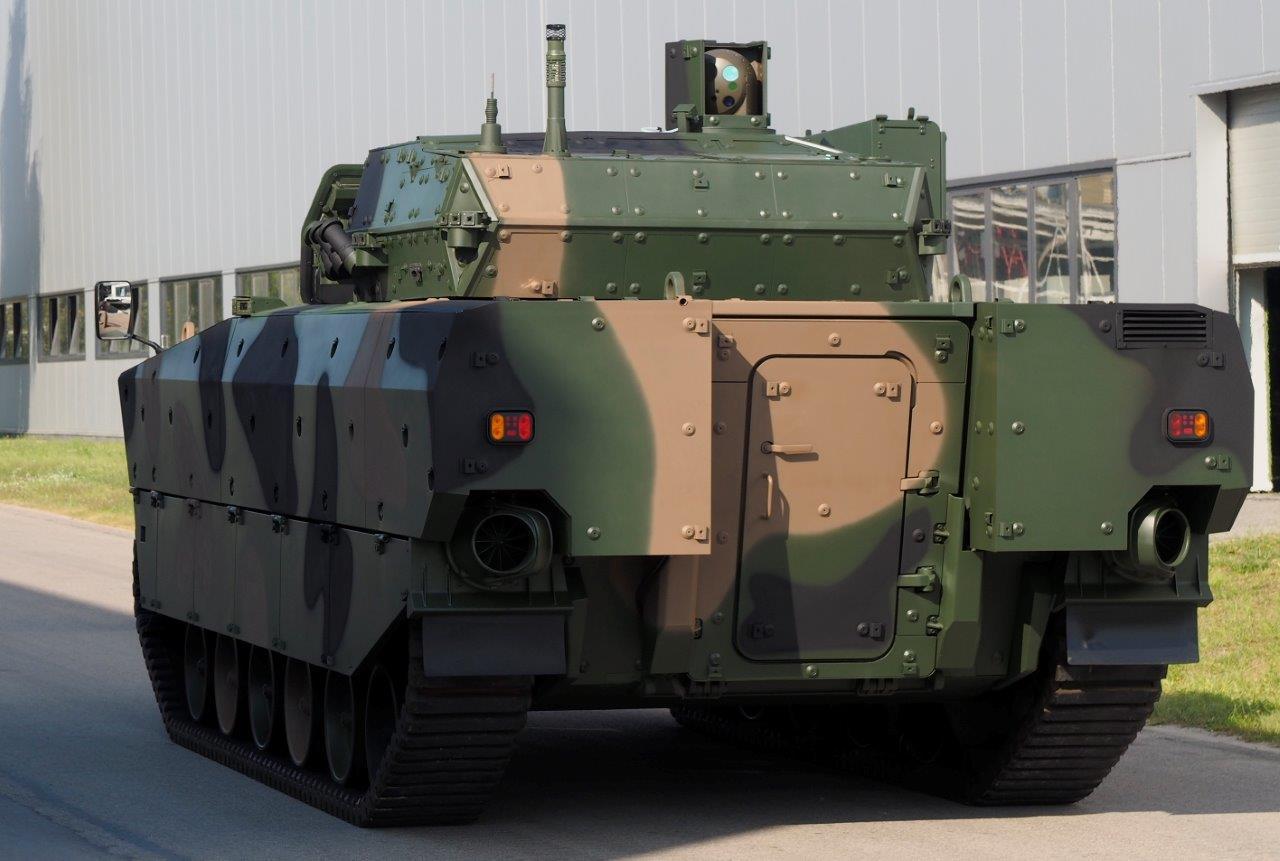
The situational-awareness data that is provided to the commander and to the gunner working in line with the “hunter-killer” principle is delivered by sensors embedded within the turret, using a variety of observation and targeting systems, ranging from daytime cameras, thermal imaging to laser systems. The observation and targeting axis for both crew members is mostly different and different in relation to their position in the vehicle and in relation to the movement direction.
Only the driver would be fully aware and unaffected by the dissonance above. However, the commander may use his optronic sensor tracking a target in the rear, while the gunner may use another sensor to aim the gun, machine gun or ATGM to neutralize another target on left on right side of the IFV. Simply speaking, the crew needs to be well trained in use of advanced technologies that assist its members in interpretation of the tactical situation with indications provided by the instruments, regardless of the sensations (such as the g-forces) that may occur during a dynamic movement.
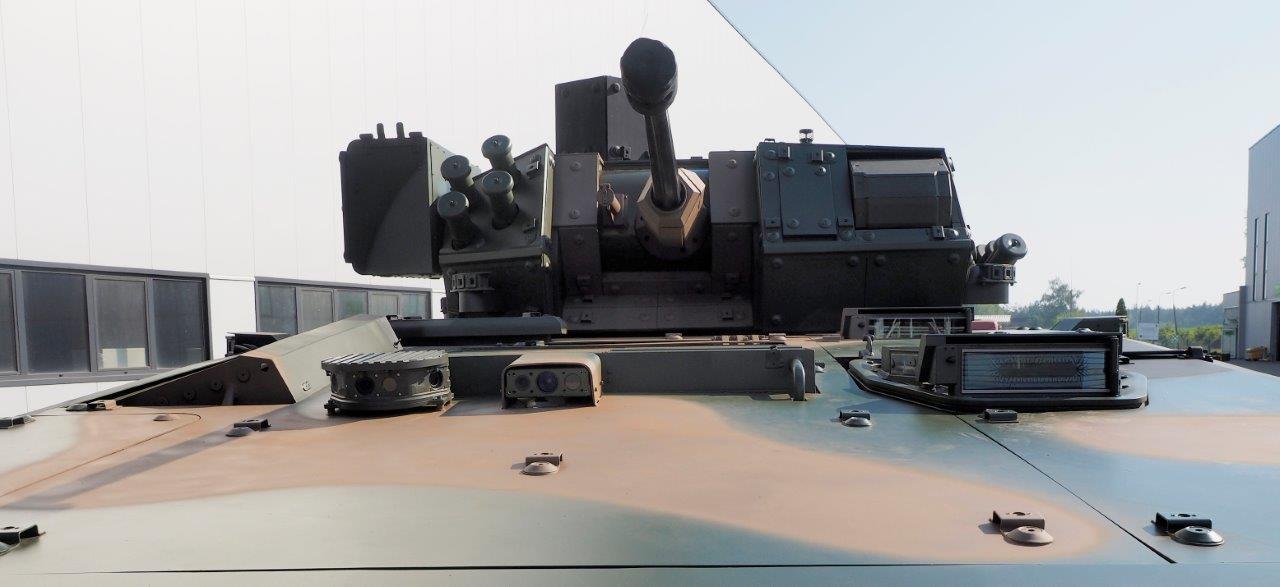
Synchronizing the procedures and actions would require the crew to create entirely new habits, different from those applicable to the existing fighting vehicles operated by the Polish mechanized and motorized units, such as BWP-1 or Rosomak APC. In case of these vehicles, periscopes are the primary source of optically provided information. The soldiers using the turret armament always remain in the very same position in relation to the turret. It is easier for them to perceive the targeting axis in relation to the longitudinal axis of the vehicle. In case of the unmanned turret, the above is impossible.
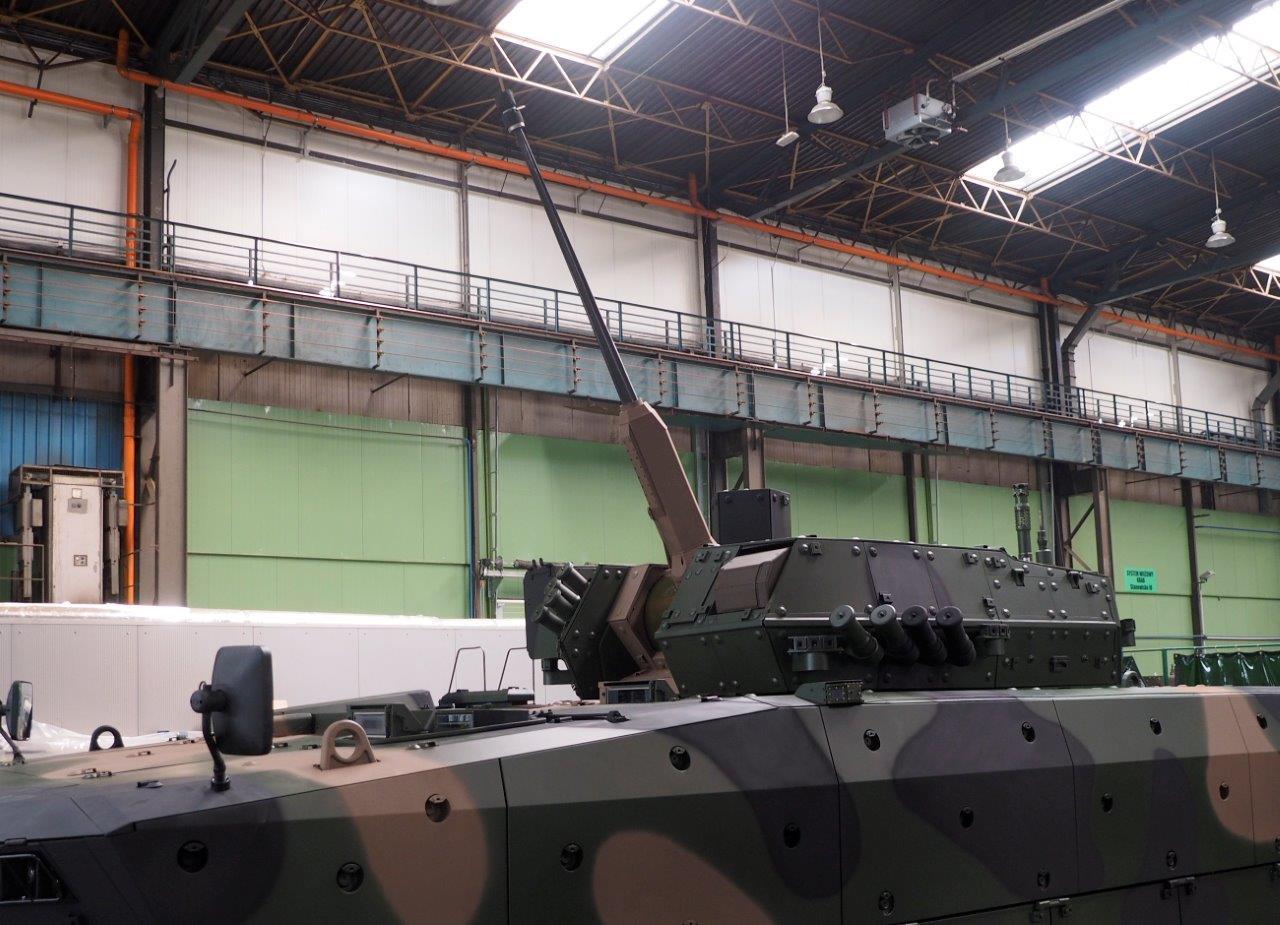
Effective and cost-efficient training of the crews tasked with operating the ZSSW-30 turret in the future should be taking place with broad involvement of simulators, without a need to use the actual equipment. It seems that a good moment came to consider development and acquisition of relevant systems within that scope, as the actual turrets are introduced in parallel. Simulators can be developed domestically. The Polish industry has quite expansive experience within that scope. Export successes also need to be mentioned here.
The importance of transition training phase can be appreciated when observing the work stations of the ZSSW-30 crew. NP BWP Borsuk vehicle is already presented with the ZSSW-30 turret in Kielce, thus, the attendants could witness the real layout of the crew stations.
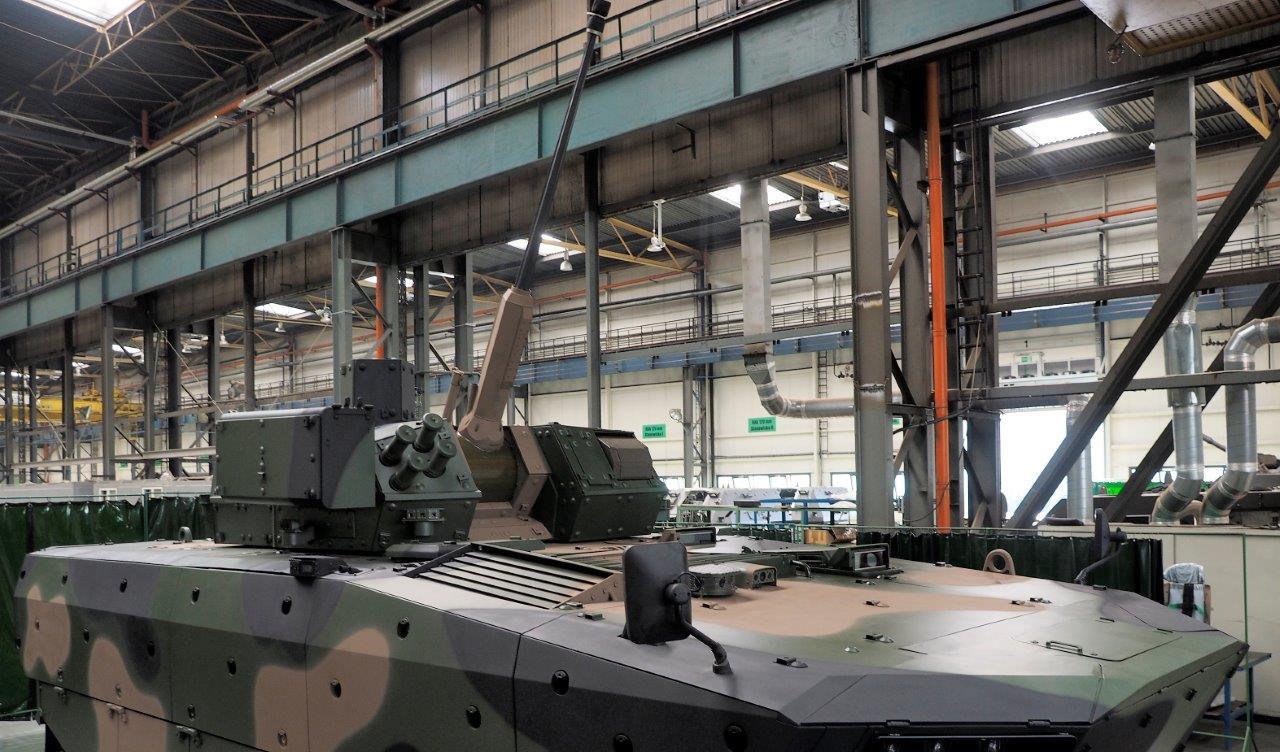
The turret features a twin Spike LR ATGM launcher, 30/40 mm Bushmaster IIS gun and 7.62 mm machine gun. The ZSSW-30 turret works on the basis of hunter-killer principle. It has already been successfully integrated with the Spike LR ATGM which has been confirmed by test programme in the summer of 2017. Not only is the ZSSW-30 turret going to be used on Borsuk, as it has also been designed to be fitted onto the Rosomak APC. It is a subject to a separate developmental effort, undertaken by a consortium led by HSW S.A. in collaboration with the WB Group. The ZSSW-30 system shall be ready for production before the Borsuk IFV.
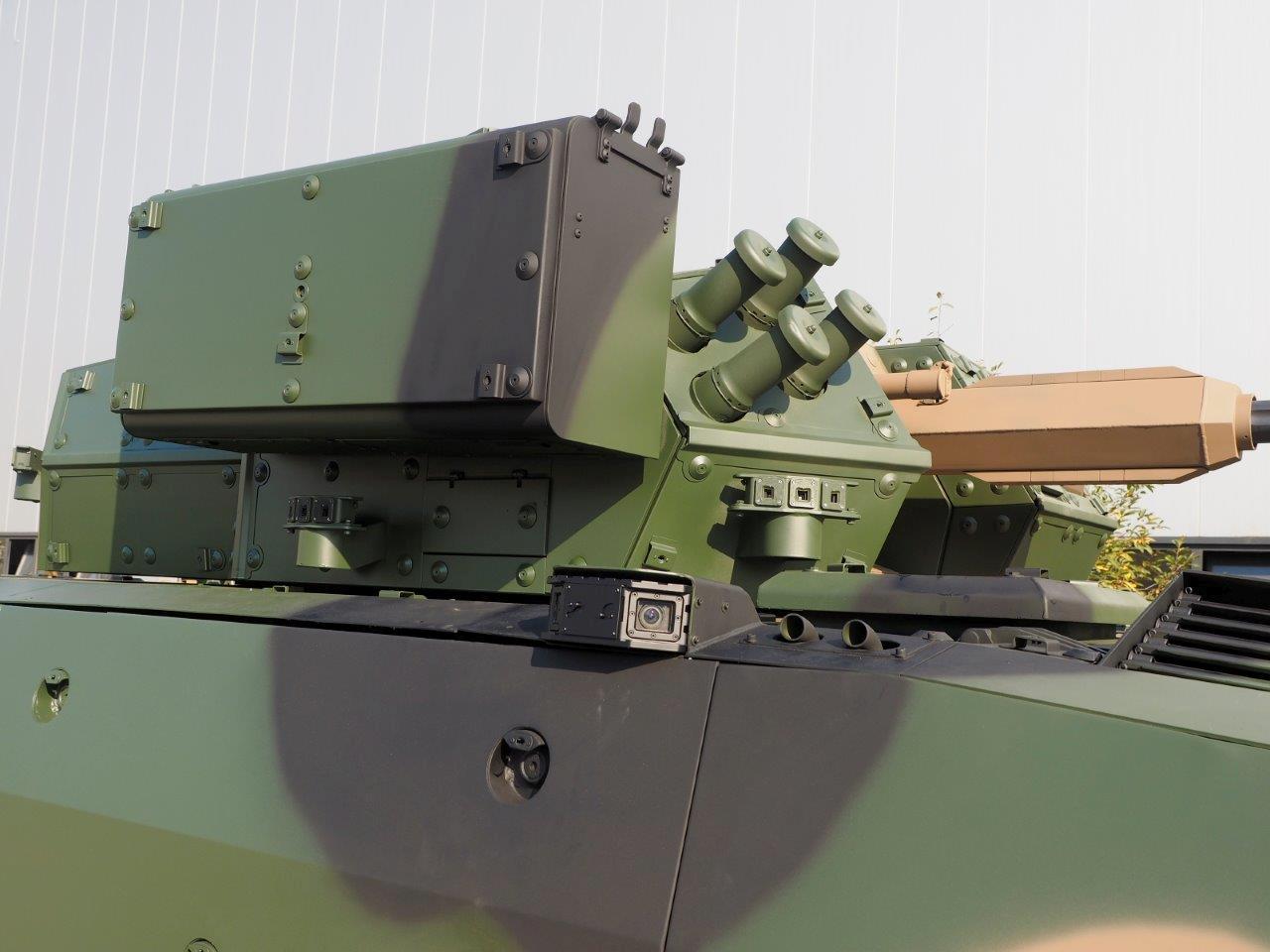
Regardless of the decisionmakers’ beliefs as to what benefits can be brought in by use of the cheapest training method using simulators and training systems, another challenge may also emerge. Here we are referring to undertaking of a serious study of tactics that would apply to operational use of the Borsuk IFV and its armament. It would be a waste of time to wait until the qualification test programme ends and series production starts, to begin this process only after the new system is introduced into the inventory. Borsuk differs, qualitatively, from the vintage BMP-1 platform. Thus training needs to be carefully prepared so that all of the Borsuk features can be utilzed to their fullest potential. Not only does this apply to autonomous operations, but also to a coherent joint operational system of the Polish military where the Borsuk IFV could play a significant role.
Jerzy Reszczyński


